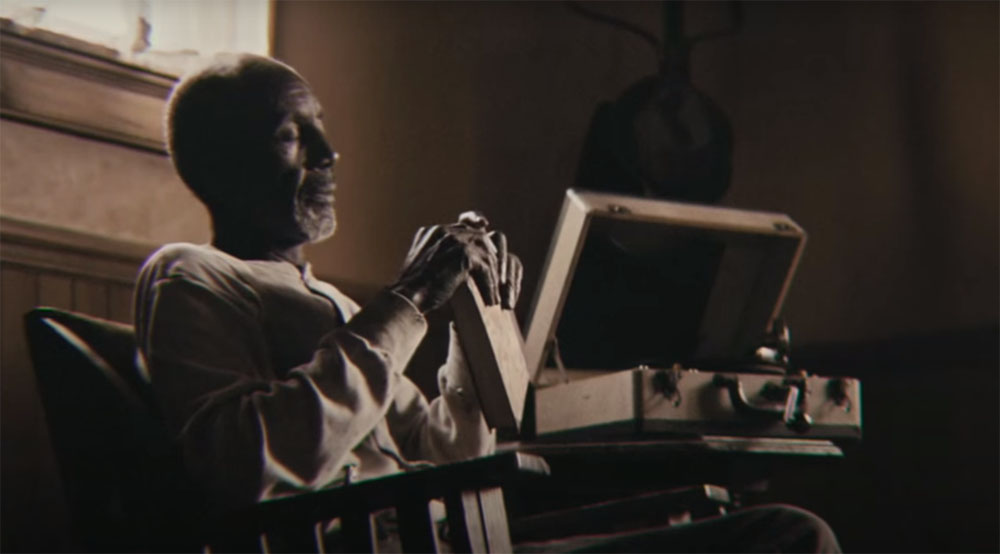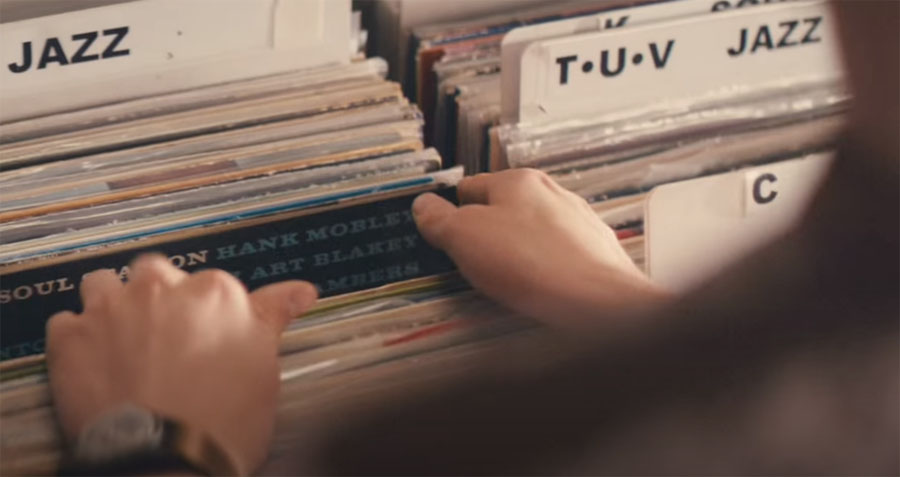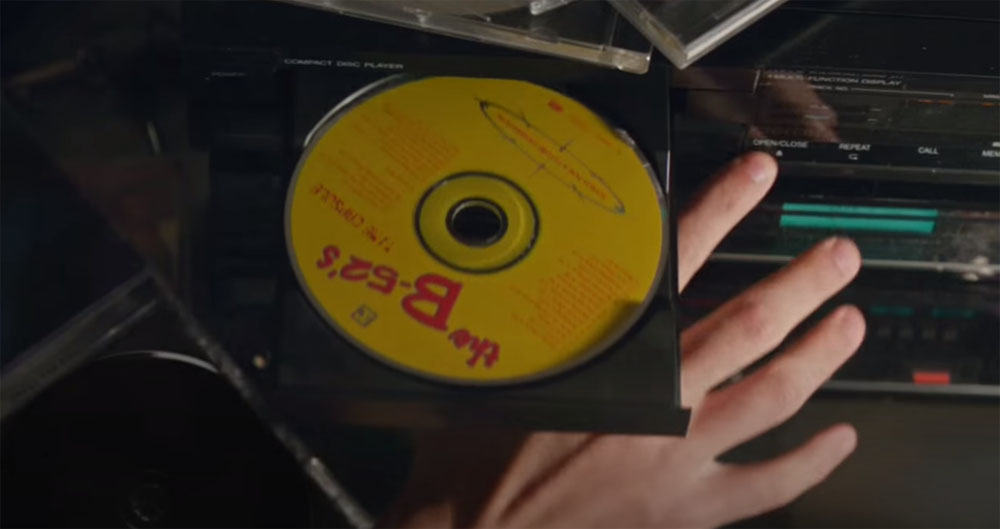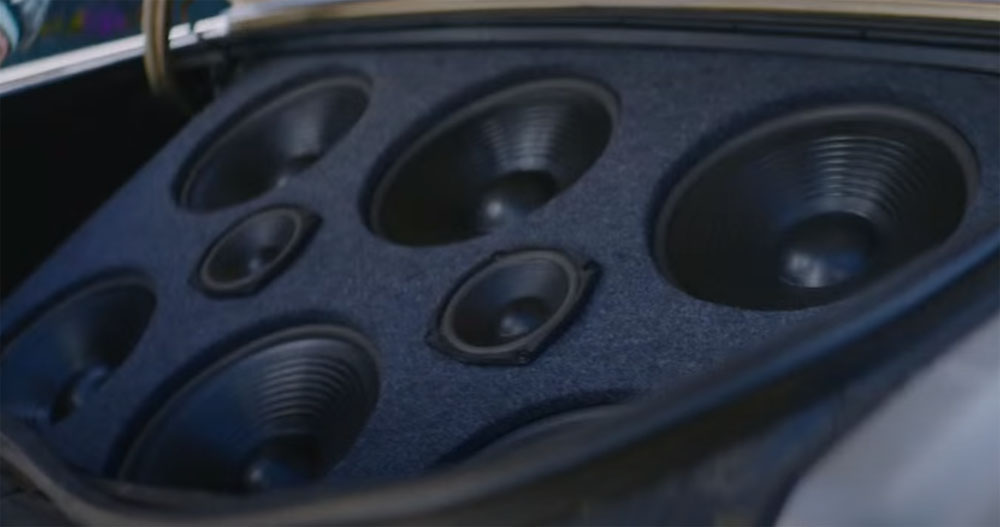Apple
Music

The
Launch of Apple
Music, June
30, 2015
The History of Sound:
127 Years of Recorded Music which "led to the next great leap
in listening: Apple Music."
By Doug Boilesen 2015
In June 2015 Apple introduced Apple
Music as "the next great leap in listening." As part
of its promotional kick-off Apple created a video showing Apple
Music as the newest addition to the timeline of recorded music.
The starting point for Apple's History
of Sound is the phonograph of 1888
(bypassing the earliest history of
recorded sound). (1)
Apple's video, however, isn't a documentary
about the phonograph or a scholarly history of recorded sound. With
its Apple look and feel, this is a montage of multiple era
music playing devices energized by a beat and sounds that climax
with the iris of an eye, a flash of light behind a man at a lectern
with outstretched arms and what looks like one finger pointing up
in his right hand and two fingers pointing up or making the letter
V with his left hand...cut to black, cut to white-lettered 2015
on black, cut to Apple Music on black...and the final cymbal.
It's a fun presentation.
For Friends of the Phonograph
the highlights are, of course, the various phonographs playing throughout
those 127 years -- visual reminders of its continuum in the history
of recorded music.
During its multi-generational use
the phonograph has been joined by a variety of descendent, music
delivering devices playing recorded music -- radios and boomboxes;
reel-to-reel, 8-track, and cassette playing systems; CD players
and Walkmans; computers, iPods, streaming devices -- and in every
era the phonograph is still playing its records.
All devices playing recorded music
have many connections with the phonograph, like repeating the phonograph's
original promise to consumers of playing sound and music for anyone,
anytime, and as an experience that phonograph advertisements likened
to the "best
seat in the house."
The history of the phonograph is a
continuum and recorded music is at the foundation of the phonograph's
legacy.
Below is a link to the 2015 video
of the launching Apple Music followed by screenshots and
some additional details about the content of this one minute and
36 second presentation of Apple's History of Sound: 127 years of
Recorded Music.
A
few details about 1888.
With attention refocused
on the phonograph, Edison and his assistants on June 16, 1888 "completed
Edison's first commercial phonograph, which is generally known as
the PERFECTED Phonograph." (1).

Edison's Phonograph recording
at The Crystal Palace, August 4, 1888 Scientific American
FACTOLA: On June
29, 1888, Handel's Israel in Egypt was recorded at The Crystal
Palace in London, the earliest known recording of classical music.

May 26, 1888 Scientific
American

July 14, 1888 Scientific
American (Wikimedia Commons)

Listen
to "The Lost Chord" (Edison National Historic Site)
Performed
by: cornet and piano (performers unknown). Composed
by: Arthur Sullivan. Record
format: Edison yellow paraffine cylinder.
Recording date: c. August 1888. Recorded
by: Col. George Gouraud. Location:
London, England. ENHS object
catalog number: E-2440-3
SCREEN SHOTS and Other
Information
The opening of the Apple
History of Recorded Music begins with 1888, a phonograph close-up,
and then a machine being cranked. This machine, however, is not Edison's
PERFECTED Phonograph nor would it have been hand-cranked or spring
driven. The man is listening with a "Recording Tube" next
to his ear, whereas a listening tube (more like earbuds) or a horn
would have been the likely way for listening to the Phonograph in
1888.
Edison in 1888 with Perfected
Phonograph and listening tube in his ears, Menlo Park Laboratory,
U.S. Department of the Interior, National Park Service, Edison National
Historic Site
Edison speaking into
recording tube of the Perfected Phonograph (later illustrated in The
Illustrated London News, July 20, 1888)



Tuning in a Radio, unknown
date or model, circa 1920's.











































Music Service Competitors
for Apple Music in 2015 (with a comparison by Techcrunch)
More 1888 Phonographia

Gouraud's "Little
Menlo" home in London.
For an interesting presentation
featuring voices from an October 5, 1888 dinner attended by Sir
Arthur Sullivan and other guests
(3) , watch "A
dinner with Sir Arthur Sullivan" put together by Jack Gibbons.
The dinner was held at the home of George Gouraud, Edison's representative
in London, whose home was known as "Little Menlo" and
where Gouraud demonstrated Edison's new "Perfected Phonograph."
Gibbons's video also
features other historic sound recordings from 1888, 1907 and 1912,
including recordings made by Savoyard Walter Passmore, as well as
historic movies filmed in England and Ireland in 1888, 1896, 1898,
1900 and 1903.
Colonel Gouraud and family
in their "Little Menlo" home listening to a message on Edison's
Phonograph, The Illustrated London News.

Phonographia
|



























































